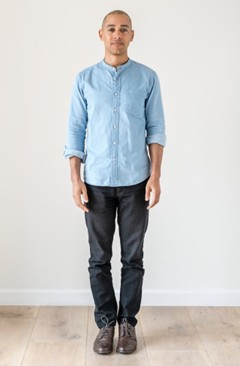
Hair loss is a widespread issue affecting millions globally, regardless of age or gender. Whether due to genetics, medical conditions, stress, or lifestyle, hair thinning and balding can deeply impact one’s emotional well-being and self-confidence. While some may hesitate to pursue invasive surgical options, advancements in non-surgical treatments have provided effective alternatives. One such option gaining popularity is scalp micropigmentation, which offers a safe and accessible way to camouflage hair loss by creating the appearance of fuller hair.
This article delves into various innovative non-surgical solutions explaining how they work, their advantages, important factors to consider before treatment, and practical advice for maintaining results.
Before exploring solutions, it’s essential to understand what causes hair loss. The most common form is androgenetic alopecia, also known as male or female pattern baldness, which is hereditary. Other causes include:
Medical conditions: thyroid disorders, alopecia areata, scalp infections
Medications and treatments: chemotherapy, radiation
Nutritional deficiencies: lack of essential vitamins and minerals
Stress and hormonal changes: pregnancy, menopause, severe stress
Trauma to the scalp: physical injury or harsh hair treatments
Regardless of the cause, hair loss often leads to thinning patches or receding hairlines, which can negatively impact self-esteem. While some people opt for surgical hair transplants or medications, many prefer less invasive methods that provide immediate cosmetic improvements with minimal downtime.
Non-surgical hair camouflage refers to methods that visually conceal thinning areas or bald spots without requiring incisions, anesthesia, or lengthy recovery times. These solutions work by creating the illusion of density, adding pigment, or covering scalp visibility.
Here are some of the most popular and effective non-surgical techniques:
One of the most innovative approaches involves applying tiny, pigment-based dots to the scalp that mimic the appearance of natural hair follicles. This technique creates the illusion of a fuller scalp by reducing the contrast between hair and skin. By strategically placing pigment, it recreates a realistic hairline and adds density to thinning areas.
Benefits of this method include:
This process is often referred to as SMP but is essentially a cosmetic tattoo designed specifically for hair loss concealment.
Hair fibers are keratin-based or synthetic strands that cling to existing hair through static electricity. When sprinkled or sprayed onto thinning areas, they instantly thicken the appearance of hair. Concealer sprays can also mask scalp visibility by tinting the scalp or hair strands.
Advantages include:
However, hair fibers do require daily reapplication and careful selection of color to match natural hair for the best effect.
Hairpieces, also known as wigs, and smaller hair toppers or volumizers provide physical coverage over thinning areas. Modern options are made from natural or synthetic hair and come in various styles, densities, and colors.
Benefits include:
While hairpieces offer a non-invasive option, they require ongoing maintenance, cleaning, and occasional replacement to maintain a natural look.
Strategic hairstyling can also help camouflage hair loss. Techniques such as layered cuts, texturizing, and volumizing products can create the illusion of thicker hair. Blow-drying with a round brush or using volumizing mousse and sprays lifts hair from the scalp, reducing the appearance of flatness and thinness.
Tips for styling include:
Though hairstyling can’t fully conceal severe hair loss, it enhances the overall look and complements other camouflaging methods.

Non-surgical options appeal to many people for several reasons:
Unlike hair transplant surgery, which involves incisions and a healing period, non-surgical methods are typically low-risk and require no downtime. This allows individuals to resume daily activities immediately after treatment or application.
Surgical hair restoration can be expensive, often requiring multiple sessions over months or years. Non-surgical approaches offer a more affordable entry point, with some solutions available over the counter or via licensed professionals at a fraction of the cost.
Non-surgical methods can be tailored to individual needs and preferences. For instance, pigmentation treatments can be adjusted to create softer or denser looks, while fibers can be changed according to hair color or style. If desired, these solutions can also be discontinued without permanent alteration.
Hair loss can impact self-esteem and mental health. The immediate visual improvement from non-surgical camouflaging techniques helps restore confidence and improve social interactions without waiting for hair regrowth or undergoing invasive procedures.
Before deciding on any non-surgical hair camouflage technique, keep the following in mind:
Consult a professional: Especially for pigmentation or custom hairpieces, seek experienced practitioners who understand hair loss patterns and skin types to ensure natural-looking results.
Understand maintenance needs: Some solutions require ongoing care, touch-ups, or reapplication, so factor this into your lifestyle and budget.
Assess the cause of hair loss: Treating underlying medical conditions or nutritional deficiencies is critical. Camouflage techniques do not halt hair loss; they only conceal it.
Evaluate scalp health: Active scalp conditions like psoriasis or dermatitis may affect suitability for certain treatments like pigmentation. Always discuss with a healthcare provider.
Set realistic expectations: While non-surgical options improve appearance, they may not fully replicate the look or feel of natural, thick hair.
To maximize the effectiveness of non-surgical camouflage, consider these best practices:
Match colors carefully: Whether fibers, pigments, or hairpieces, color matching to your natural hair or scalp tone is essential for a seamless blend.
Keep scalp and hair healthy: Regular washing, moisturizing, and sun protection preserve scalp health and prolong treatment effects.
Avoid excessive heat or harsh chemicals: These can damage hair or fade pigments prematurely.
Follow professional aftercare: For treatments like scalp pigmentation, adhere to recommended post-care to ensure longevity and prevent complications.
Combine techniques: Many individuals find combining methods - such as using fibers with styling products or pigmentation with hairpieces - offers superior results.
Hair loss can be a distressing experience, but the good news is that non-surgical options offer a wide range of effective ways to camouflage thinning hair and bald spots without invasive procedures. From cosmetic pigmentation and hair fibers to hairpieces and expert styling, these methods provide accessible, customizable solutions that help restore confidence and improve appearance.
Choosing the right approach depends on your specific needs, budget, and lifestyle. Consulting with a qualified hair specialist or dermatologist can help guide you to the best option for your situation. With the right care and realistic expectations, non-surgical hair camouflage can be a transformative solution - helping you face the world with renewed confidence and a fuller-looking head of hair.